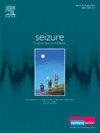Clinical and radiological evaluation of children with hemimegalencephaly and epilepsy: A single-center study
IF 2.8
3区 医学
Q2 CLINICAL NEUROLOGY
引用次数: 0
Abstract
Purpose
Hemimegalencephaly (HME) is characterized by severe seizures, cognitive impairment, and unilateral motor deficits. This study aimed to evaluate the clinical features, electroencephalogram (EEG) and neuroimaging findings along with treatment outcomes in pediatric epilepsy patients diagnosed with HME.
Methods
A retrospective review was conducted on 14 pediatric epilepsy patients with HME, encompassing clinical data, video-EEG findings, neuroradiological assessments and treatment outcome.
Results
The study revealed a predominance of left-sided HME (11/14) and syndromic presentations in three patients. The median age of seizure onset was within the first day of life (range: 0–225 days). The median follow-up duration was 30 months (3–72 months). All patients experienced daily seizures. At the time of evaluation, 11 patients were on three or more antiseizure medications. Adjunctive therapies included ketogenic diet in four patients, mTOR inhibitors in two patients, and a combination of both in one patient. Ictal recordings were obtained in 13 patients, with two patients exhibiting bilateral independent ictal onset. All but one patient demonstrated refractory seizures on follow-up. Six patients (42.8 %) underwent epilepsy surgery, resulting in seizure freedom in three cases (50 %) and a mild reduction in seizure frequency in one. Two patients experienced intraoperative hemorrhage, resulting in monthly seizures and postoperative mortality, each in one patient.
Conclusion
Hemimegalencephaly represents a challenging etiology in refractory epilepsy of early childhood. Given the limited efficacy of pharmacological modalities, epilepsy surgery seems to be the only effective treatment option for seizure control in these young patients, however, carries significant risks for mortality and morbidity.
儿童半巨脑畸形和癫痫的临床和影像学评价:一项单中心研究。
目的:半巨脑畸形(HME)以严重癫痫发作、认知障碍和单侧运动缺陷为特征。本研究旨在评估诊断为HME的儿童癫痫患者的临床特征、脑电图(EEG)和神经影像学表现以及治疗结果。方法:回顾性分析14例小儿癫痫伴HME患者的临床资料、视频脑电图、神经影像学评价及治疗结果。结果:研究显示3例患者以左侧HME(11/14)和综合征表现为主。癫痫发作的中位年龄在出生第一天内(范围:0-225天)。中位随访时间为30个月(3-72个月)。所有患者每天都有癫痫发作。在评估时,11名患者服用了三种或三种以上的抗癫痫药物。辅助治疗包括4名患者的生酮饮食,2名患者的mTOR抑制剂,以及1名患者的两者结合。13例患者获得了起搏记录,其中2例患者表现为双侧独立起搏。在随访中,除一名患者外,所有患者均表现出难治性癫痫发作。6例(42.8%)患者接受了癫痫手术,其中3例(50%)患者癫痫发作自由,1例患者癫痫发作频率轻度降低。2例患者出现术中出血,导致每月癫痫发作和术后死亡,各1例。结论:半巨脑畸形是儿童早期难治性癫痫的一个具有挑战性的病因。鉴于药物治疗的有效性有限,癫痫手术似乎是这些年轻患者控制癫痫发作的唯一有效治疗选择,然而,手术具有显著的死亡率和发病率风险。
本文章由计算机程序翻译,如有差异,请以英文原文为准。
求助全文
约1分钟内获得全文
求助全文
来源期刊

Seizure-European Journal of Epilepsy
医学-临床神经学
CiteScore
5.60
自引率
6.70%
发文量
231
审稿时长
34 days
期刊介绍:
Seizure - European Journal of Epilepsy is an international journal owned by Epilepsy Action (the largest member led epilepsy organisation in the UK). It provides a forum for papers on all topics related to epilepsy and seizure disorders.
 求助内容:
求助内容: 应助结果提醒方式:
应助结果提醒方式:


